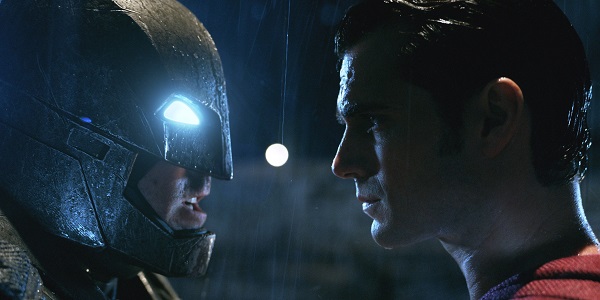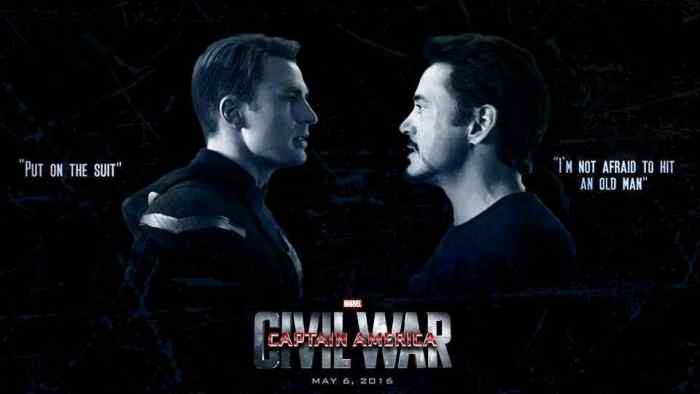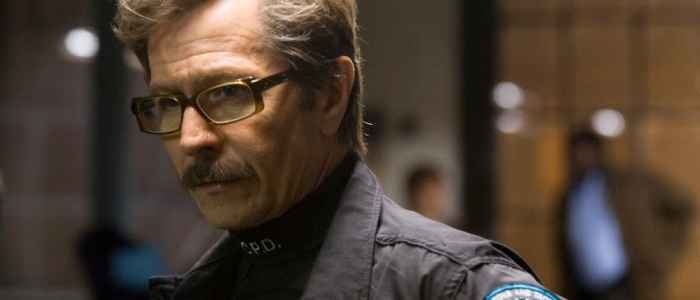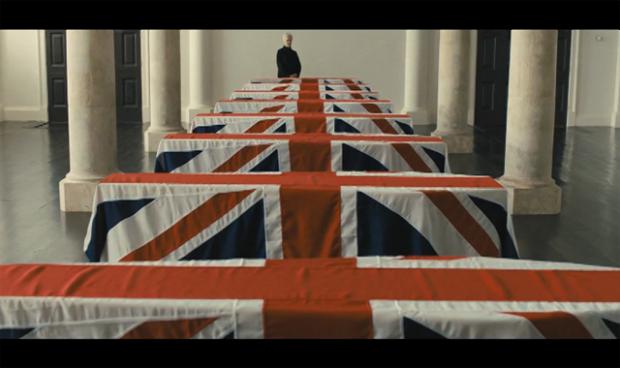Gosh, the Main Character Is Dead!? So, When Do They Come Back?
As proved with the colossal worldwide opening of Batman V Superman: Dawn of Justice, superhero and/or action movies still seem to be the biggest draw for mainstream audiences. And even when it’s a subversive take on the genre like Deadpool or The Martian, there are still numerous tropes and set-pieces we have come to expect from these pieces of cinema. These aforementioned paint-by-number scenes are tolerated and put up with by theatre-goers because they know the purpose they serve and they are usually pretty painless to sit through in order to get their dose of smashy-smashy action. But that doesn’t mean that we don’t appreciate at least an attempt of originality when doing so; think of the quite literal ‘meet-cute’ scene in 22 Jump Street where Channing Tatum’s hapless undercover detective accidentally bumps into Wyatt Russell’s villain, causing Tatum to drop his meat sandwich (get it? Meat, like meet) and Russell to drop his cue tip (cue tip, sounds like cute. Aren’t writers clever, eh?) in said sandwich, making them have a literal ‘meet-cute’. This playful interpretation of a scene audiences know all too well shows that not only is there another way to present these carbon copy sequences, but that it can also elevate the material it inhabits.

One particular trope that has continued to surface in these big budget movies, and is in dire need of either more originality or extinction, is the temporary killing off of main characters. This trope has of course existed for an exceedingly long time across many different genres and platforms, but using the current example of Batman V Superman and drawing comparisons with other comic-book movies, this article will focus primarily on how this trope, be it frustratingly repetitive or inventively original, is employed in the blockbuster genre.
In this franchise-heavy environment we live in, actors are tied down for multiple movie contracts and their characters are integrally tied to the success of the movies they adorn. Meaning, we know that certain actors and characters have an untouchable status, not to mention that a mainstream audience don’t exactly want to watch all of the good guys they were rooting for up and die. So why do filmmakers still insist on killing them off when we know they’re going to be almost instantly brought back?
Batman V Superman

Staying with the first reference point, Batman V Superman features the eponymous offending trope right at the back-end of the superhero mash-up movie. After the dust has settled on the CG-heavy finale, the immortal Superman is shown to be sans life, which we know, because of the countless bullets, nuclear bombs and bad reviews he has endured thus far, will only last so long before his resurrection. Unless a touch of the green and nasty stuff is involved in his demise, Clark Kent’s alter-ego always finds a way back to life, but still Zack Snyder ends his movie with not one, but two funerals for the character. In attendance are all those who care about him: Bruce Wayne, Diana Prince, his Ma’ and of course Lois. Now, the first defence of this trope would of course be that it is there to make an emotional impact on the characters who surround him and then in turn, affect the audience. But considering how savvy a 21st century audience is to Superman’s certain resurfacing, the whole scene just comes off as hollow instead, the fact that half of my screening were already out the door before the dirt atop Supes’ coffin inevitably moves just further illustrates this.
Another possible reason for doing this could be to give more weight to the alternative thinking of Bruce Wayne and Batman. Considering how much onus was placed on the differences between Superman and Batman throughout the film’s marketing, courtesy mainly of Jesse Eisenberg’s exposition-laden zany rambling, the opposition of the titular characters is seemingly crucial for the DC franchise as it moves forward. Meaning Bruce Wayne’s darker and more vengeful approach to crime fighting would come to the fore for the first part of the next string of movies due to Superman’s comparably idealistic approach being absent. But, as the unsettled dirt on his coffin confirms, he won’t be absent for long and unless his near-death experience has completely altered his views, the audiences will be treated (for want of a better word) to the same arguments and opposition that they have already sat through and apparently seen resolved in this first movie. Also, these discussions are something which can be achieved without the eye-rolling method of temporarily killing a main character as evidenced by the upcoming Captain America: Civil War which also deals with superhero squabbles but doesn’t resort to using this already exhausted trope, we assume anyway.

So how do we inventively side-step this trope? No matter how creative the actual death of the character is, most audiences will still spot the wool being pulled from miles away. Whether it’s Optimus Prime in Transformers: Revenge of the Fallen or either of the three characters of Jack, Will or Captain Barbossa in the Pirates of the Caribbean movies, the use of this method comes off as entirely expected, which stunts its impact. Meaning that maybe it shouldn’t be something we should alter, so much as fundamentally change. Let’s look at a few examples of how other movies have treated similar story beats.
How Other Movies Have Treated Similar Story Beats
Staying within the superhero genre for now, let’s go back to 2008 and look at Christopher Nolan’s The Dark Knight, an almost universally praised comic-book movie which pulled off the decidedly difficult trick of keeping its plot hidden in an environment that was becoming near impossible to do so. Batman is a character like Bond, more on him later, a cultural staple that will always find a new iteration across multiple generations, one that even when he does die, usually in some alternate run of comic books, we know it will only be a matter of time before he is back in our lives. Knowing this, Nolan never legitimately places his Batman in a sense of mortal peril. Instead, leaving that honour to his supporting cast. The Dark Knight has two differing instances of this in its runtime, the first one being an exact copy of the trope but instead of killing and resurrecting Batman, he does it to Lieutenant Jim Gordon.
Despite Gary Oldman being a considerable string to the already exquisite bow of Nolan’s Bat-verse, he wasn’t Batman. And even though the landscape of comic-book movies has often proved unwilling to pull major shocks and kill any of its major characters off, unless your Uncle Ben of course, the fact that it was Nolan’s much grittier interpretation of Gotham left that landscape a little less certain. Around the halfway point in the movie Gordon, who often served as the moral compass in a corrupt city, is an unfortunate casualty caught up in the havoc that Heath Ledger’s Joker is wreaking on the city. This scene and the ones following, which show a seemingly guilty Batman watch over his family, build up a believability that is shattered when Gordon resurfaces not long after to help incarcerate the Joker. Not being the main cast member in the movie and being considered as comparably expendable, Gordon’s death and resurrection not only surprises the audience but also resonates with them much more on an emotional level.

As if presenting one alternative within the movie wasn’t enough, Nolan outdoes even himself within the same movie, how? By actually killing off a character. Having already faked the death of one of his main cast, the audience would be correctly sceptical of any future mortal brushes the characters may have. But as the Joker’s master plan comes into fruition later in the movie, events conspire to place both Aaron Eckhart’s Harvey Dent and Maggie Gyllenhaal’s Rachel Dawes at opposite ends of the city in their seemingly final positions.
As Batman and Gordon race to save both of them the audience could be forgiven for thinking that this is just another Hollywood false promise and that the heroes will once again save the day. Even most sceptics would assume that true love would endure and Batman, at the very least will save his beau, Rachel. But combining this audience expectation with his villains penchant for playing tricks proved to be a masterstroke by Nolan. As Batman opens the doors to the cries of Harvey yelling “No! Not me! Why are you coming for me?” we realise that the Joker has deceived everyone once more by lying about who was in what location and after a quick cut to Gordon and the trailing police, we watch the other building go up in flames and say goodbye to Rachel. The shocking demise of Gyllenhaal’s character not only has an emotional impact on the rest of Gotham and the audience, but it also serves as a warning that the rest of the cast could also be in danger, not only for the rest of the movie, but also for any future installments.
Another film that captures both sides of this trope is the Daniel Craig Bond picture, Skyfall. Opening in Istanbul, Bond and Moneypenny are in pursuit of a mercenary which culminates in Bond and the aforementioned merc’ fighting for their lives atop of a moving train. So far, so Bond. Fastly approaching a tunnel, Moneypenny watches on through the scope of her sniper rifle, she relays her doubts of being able to get a clear shot to MI6 in London but they tell her to take it anyway, resulting in Moneypenny accidentally gunning down 007.
Coming very early in the movie and existing within the fabric of a Bond feature which is known for toying with its lead character’s mortality, albeit never definitively, this actually comes not as a sigh-inducing development, but an interesting path for the film to take. Not because the audience ever truly believes Bond is actually dead, but for the way it allows the narrative to continue and broaden in his absence, giving centre stage to Judi Dench’s M as she is forced to deal with terrorist threats amid the equally real threat of losing her job to a circling Mallory. This plot development not only provides us with the initial tense scene of Moneypenny trying her best to hit Bond’s foe, but it also adds much more emotional depth to the character of M, a conscious choice on the filmmakers behalf to make her climactic death that much more hard to stomach.

We all know that the bankable stars of these adrenalin-filled action movies we consume are, nine times out of then, never going to die. Unless it’s some protracted contract dispute where the actor wants out of the franchise, and even then they’re more likely to simply be replaced, we can watch most big-screen crowdpleasers in the relative knowledge that our leads will end the film as they started them, safe. This well-known trope of killing off the main character, only to arbitrarily bring them back at a later date is well past its expiry date and unless it serves a bigger narrative purpose, like in Skyfall, filmmakers are probably better off finding alternative solutions to give the audience the shock they want to.
They should creatively look to change the situation as most audiences are already attempting to predict the outcome of the plot as soon as the opening titles end. Future filmmakers should take the lead from these examples that are already doing so, perhaps they could try altering a character’s death to a serious injury like in Nolan’s Bat threequel The Dark Knight Rises, which shifts the impending jeopardy from the character we know won’t die to a whole city that just might. Or maybe they could just pull the well-worn beat off as a joke like in Mission: Impossible – Rogue Nation, where Tom Cruise dies for literally seconds and is immediately subject to a joke about it by Simon Pegg. And even if future films can’t creatively address this issue in the aforementioned ways, at the very least please consider killing off a semi-important character to achieve the same emotional impact. Because let’s be honest anyway, even if the main characters stayed dead, general audience members are going to be much more affected by the death of the gentile, lovely and worldly Alfred in future Batman movies than they are going to be by the death of half-man half-god Ben Affleck who just struts around making the rest of us look bad.
What do you think? Leave a comment.











If resurrection is built in to the character as part of the premise, it is okay. Think of Doctor Who. It’s okay that the Doctor can regenerate. It’s built in. We expect it, we know it will happen. Second, there need to be consequences – real costs for the resurrection. It can’t be a handwave and a smile. When the Doctor regenerates, he changes. (Okay, there’s that one exception, but it’s explained in a neat way. And it has its own consequences.)
True that! It’s part of the DNA in Doctor Who and it needs to exist within it. And they sort of have fun with it too.
I actually really hate it when characters resurrect in anything. The only exception was Gandalf and I made that exception in spite of my usual standards. I despise DBZ for that reason. I can’t stand resurrection freely handed out just because.
When you raise someone from the dead once, it can be meaningful. When you do it over and over again, it’s a parlor trick.
a la Dragon Ball Z.
I’d say the Wonder Woman franchise is allowed to let death be a revolving door for the Amazons.
Returning dead characters are a waste, but one exception… Buffy Summers, only because it’s made clear that bringing her back was, in fact, an enormous mistake, both for her personally (they ripped her out of Heaven!) and because it allowed the First Evil the chance to wreck its havok on the world.
Gandalf never died. That’s the real exception.
Well, I dunno about the book but the movie implied he was brought back because God did it.
Agreed. It’s the resurrection trope now. Along with the time travel trope. It depends how well it is done. It’s great when the person was evil and comes back good and has to win the people he/she betrayed. Like Dr. Wells in Flash. Or the opposite like Jay also in Flash.
Resurrection is only effective when juxtaposed with radical character development and I am guessing really fun for the actor to play. Ward from Agents of Shield seems to go through one of these super game changers every season.
I believe TV trope refers to it as Death is Cheap.
How will you feel if Han Solo comes back?
Good question. I usually despise it when people come back from the dead but Han coming back… I’d be happy but at the same time, I’d be underwhelmed, disappointed. So… mixed feelings, mostly pissed off.
This turned out great! When I’ve told other people about Clark’s death at the end of BvS, the typical reaction is, “Yeah, RIGHT.” While “The Dark Knight Rises” didn’t get the warmest reception, I thought having Bruce beaten up throughout the first half made an impact because it involves seeing the character struggle and them (sometimes literally) finding a way to climb out of the despair. It’s a good comparison to bring up.
As a writer, I tend to not kill off a lot of my main characters because I joke that I can’t torment them if they’re dead. But it’s true–a downtrodden and conflicted character is more engaging to pull out of defeat than a character who can’t really emote because, well, they’ve bitten the dust.
Also, I love the closing sentence.
Thanks for the help in editing Emily, appreciate your input lots.
Completely agree on those two examples, it’s so utterly eye-rolling in BvS but the slight alteration on it in The Dark Knight Rises actually adds so much to the film, as we’re with him in the struggle and we can see how difficult it is for him.
Also, great mantra for writing! It’s definitely no fun if all the characters are living un-tormented lives
Comic book characters are a special category. They treat death so casually that you never take it serious. So, as punishment, I’m hereby revoking all their resurrection privileges – even in cases like Superman and Captain America where nobody believed the deaths were real in the first place and their returns were already plotted out before their deaths occurred.
Neo is well and truly killed near the end of the Matrix, only to be brought back by Trinity’s love (and being The One). I’m not sure how I feel about it, but works in the context of the story.
Remember when Magnum PI miraculously came back to life when Tom Selleck decided he wanted more paychecks?
You’re not going to be very concerned about a hero’s fate if the door of heaven is a revolving one, are you?
When a bad guy comes back from the dead in any way it’s just an annoyance but if the hero comes back then it takes away some of the heroics from his actions since he was never in any real danger to begin with.
Bringing characters back from the dead generally cheapens the original story, especially if the character died in a heroic sacrifice.
Spock should have stayed dead.
The real problem with bringing characters back from the dead is that death loses meaning for the reader. Damn near every important character has died in Steven Erikson’s Malazan series, and all but one has ended up returning in one way or another. In book 5, a character dies a poignant death, but Erikson totally destroys the emotion by bringing him back in book 7. So a couple chapters later when another character is killed senselessly, my only reaction was “meh, he’ll be back”.
I feel much the same whether the character is actually dead or just believed to be dead. There’s sometimes, very rarely, good reason for it within the story, but most of the time it’s a rather obvious way for the writers to have their cake and eat it too. They get the emotional punch of a death without any consequences. The longer they draw it out the worse it is.
Resurrection translation: I tried to make it as an actor and failed miserably, so i’ve come crawling back.
I do wonder with all these weird resurrections/returns, where the character invariably is declared to have faked their own death, how did they fake their own autopsy? For once I should like a conversation to go along the lines of “But you’re dead! We buried you!” “No, you only thought you did. I escaped.” “Give over, you’re a taxi driver not bloody Houdini”
Its called fiction (or a bloody miracle). Suspend your disbelief.
I’m still annoyed that JKR “killed” Harry Potter and then resurrected him. The scene where he’s going to the forest, expecting to die was very powerful for me the first time I read it. But now the scene has no emotion for me whatsoever because I know that it’s all a cheat. In contrast, George RR Martin’s Song of Ice and Fire is a difficult re-read for me because he kills off his protagonists for good.
Marvel has had so many characters come back from the dead that I remember a story where someone was begging Dr. Strange to bring someone back to life and was incredulous when the Dr. insisted that it just wasn’t doable.
Comic books are obviously the worst-offending genre, though probably the single most-offending character is Xena, whose series finale went to enormous lengths to say “Okay, she’s really dead now–and this time we mean it!” And even then they’d already established that she’d be reincarnated to canoodle with Gabrielle in time.
One example of a work where I think the bringing-back-from-death is permissible is The Who’s Tommy (in any of its incarnations). Captain Walker goes missing during the war and is presumed dead. He reappears only to find that his wife has taken up with another man, and either kills (album, play) or is killed by (movie) this other man. Young Tommy witnesses this murder, which sets off the whole rest of the story. Since the supposed death and then reappearance of Captain Walker is fairly plausible in context, happens at the beginning and is dealt with pretty quickly, and is necessary to the plot, I’m not bothered by it.
This phenomenon isn’t restricted to film or TV.
I generally dislike resurrections, unless it fits within the overall narrative of the story. Also, the resurrection has to have consequences. You can’t just die and then come back and go back to normal. Superheroes are the worst. I just cannot appreciate death and finality in the superhero universe.
When you’re dealing with something like company owned comic books, it all depends on how a character died. If someone was bumped off in a single panel because some dork writer wanted to prove how badass and extreme his new pet villain is, I don’t mind the death being undone or ignored because you can’t take meaning away from something that was pointless to begin with.
I think this is a topic that has layers. I think one of the larger problems is the pervasive information the public is given on the future of a given franchise. It’s hard to feel anything about Superman’s death when we have already learned of the plans for future instalments from both the director and stars (though that was the least of that film’s problems). Marvel has a similar issue with continuously laying out its plans for future phases in order to build excitement in its audience.
On a more creative level I think it’s time for storytellers to challenge themselves in finding other ways to raise the stakes and create drama beyond killing off characters, especially in mediums where this is easily rectified with a “reset”. Alternatively, they could also make the bolder choice of sticking to their guns and making a conscious effort to make death lasting, if not totally permanent. This is especially true in comic books where changes to the status quo are temporary and subject to change based on both reader reactions and (above all) sales.
As audiences become smarter, storytellers MUST find ways to challenge, subvert, and otherwise surprise audiences if they wish to be engaging.
These are great points. This is the superhero genre, and in comic books, no one is ever really dead.
I enjoyed your article. The bits of humor I caught onto were a good addition to a solid read. I do wish you had elaborated more on the significance of Superman coming back, but I understand that this piece wasn’t purely about S v. B.
I think BvS was doomed to fall to tropes when they tried to shove in more than one BvS comic into the storyline. Although the death of superman fall in line with the comic (well, er) The Death of Superman, it wasn’t done very well. As soon as I saw it in the theatre, everyone was like: “oh, well, we’ll see the next one”
Superman’s death was handled very poorly in the movie, but we must remember that is was just as bad in the comics (to a lesser extent). DC had time to introduce “replacements” and had a whole arc about a world without the Man of Steel. The whole DCEU just seems too rushed by Warner Bros in order to catch up with Marvel’s success. It’s a shame really, coming from a DC comics fan.
Speaking of contracts meaning that characters cannot actually be killed off – Quicksilver’s actor was reportedly tied down for several movies but has not had a resurrection. How does that work? Of course, chances are, he might in the Infinity War movies.
Also, what do you think of the actual death of Paul Walker not making the franchise kill him off? Not sure if he was signed for more movies but if so, what could happen?
I agree with everything you wrote and I too am sick of the cheap ‘Non-Lethal Death’ as a way of eliciting false emotion out of the audience. It’s not quite up there with ‘I Allowed Myself To Be Captured To Mess With You’ (which Skyfall, TDK and TDKR all make use of), but it’s close.
Big fan of it… But the death, kind of dissapointed me..but we all know how fiction works.
The use of the resurrection event in a movie has always annoyed me to no end. In human existence, death is a constant fear, which is a great tension in works of art. When a character dies, that should be considered a great loss for the audience and other characters. The moment you allow a resurrection occur, that tension is lost, the audience can’t connect to the characters any longer, and victory for the characters is inevitable, making it useless to even continue reading/watching/listening/observing the art form any longer. As with anything, there are certain exceptions to this if it is done extremely well, but for the most part, it just dampens the entire movie going/novel reading/TV Show watching experience.
Supernatural sees Sam and Dean brought back from the dead numerous times and the first few actually carried, in my opinion, emotional weight. But as the series went on the resurrections had less and less time between them until they’re being brought back before the credits even roll on that very episode.
Its hard to be invested not only because it makes the story predictable but it takes away one of the main connecting points of character an audience, the fact that we all owe life a death.
Totally see your points. Watching the main character “die” just to be a-ok in two seconds is screenwriter trick that needs to be retired asap. Killing off main characters is rarely done well. At the moment I can think of one movie: Saving Private Ryan, but I’m sure there are others. A bad example that should definitely never be forgotten is what they did in The Matrix with Neo and Trinity. Totally unneeded and ridiculous, but that’s just my opinion.
I believe that in the 1980s when Dallas was filming, the way that they brought main characters back to life is by making basically all of one season a dream completely.